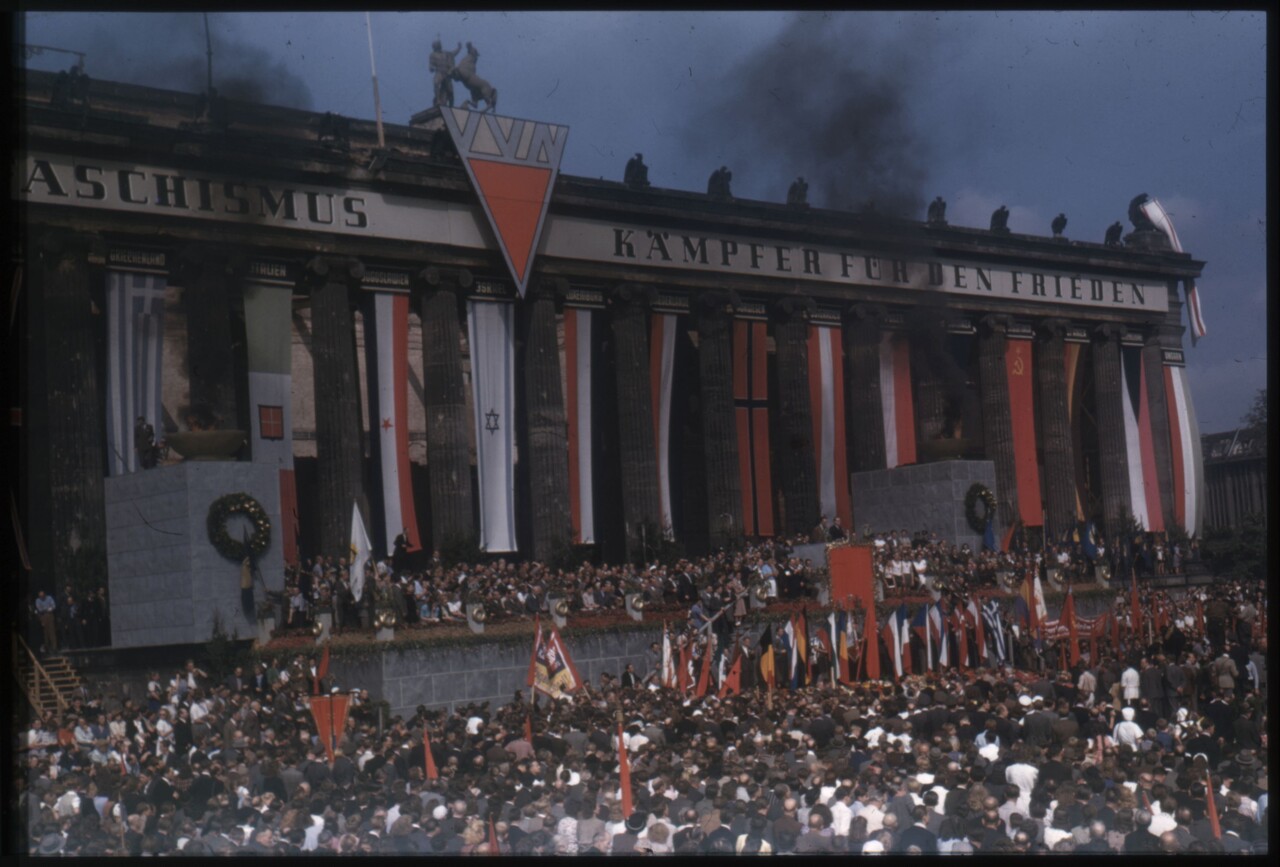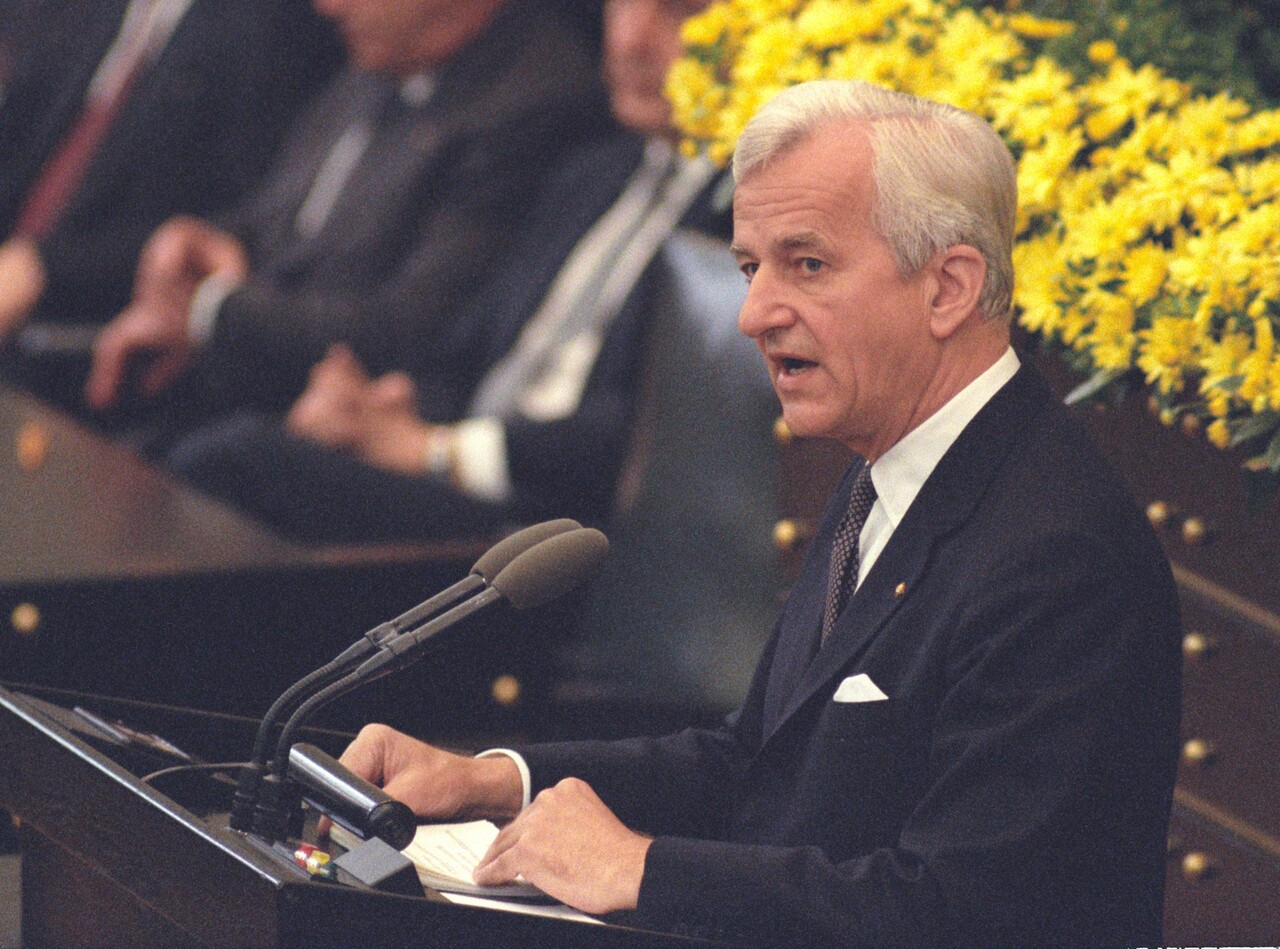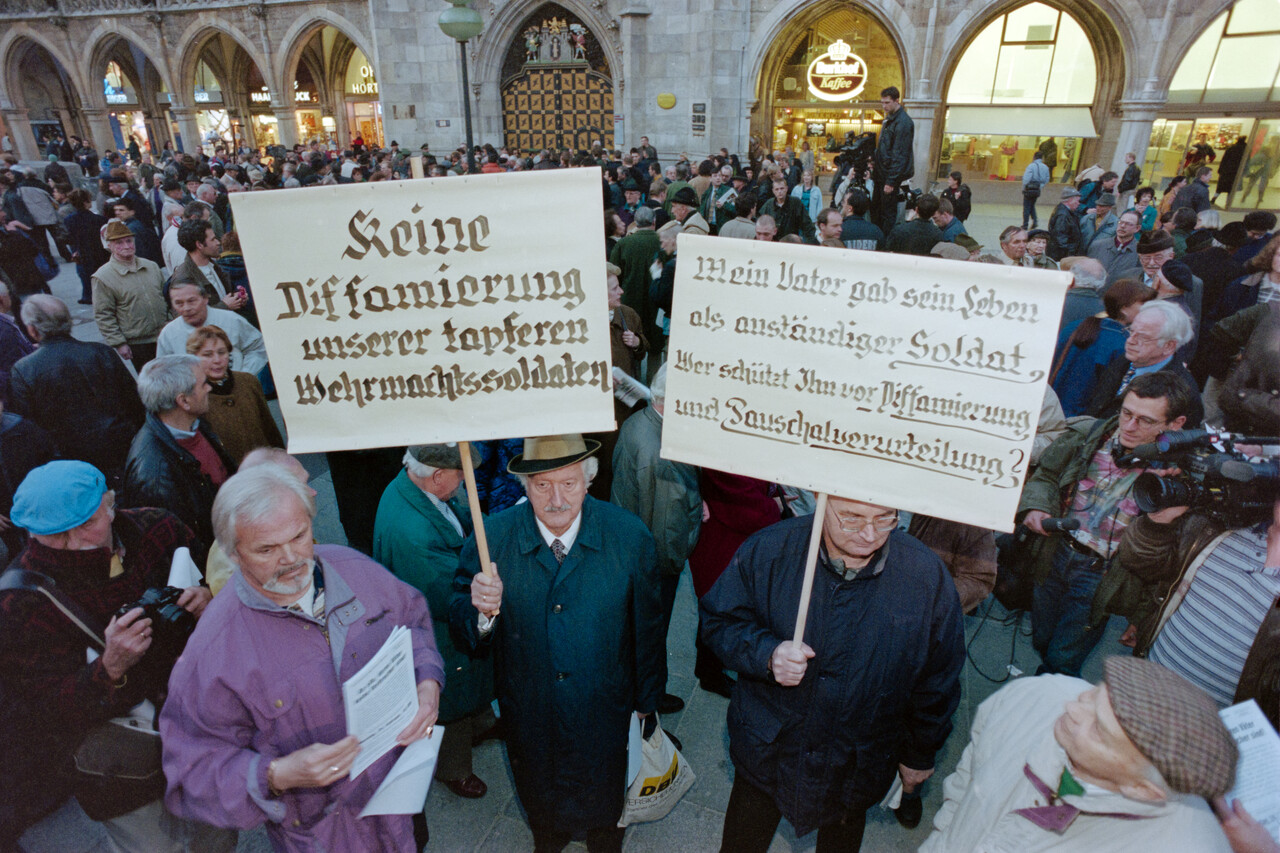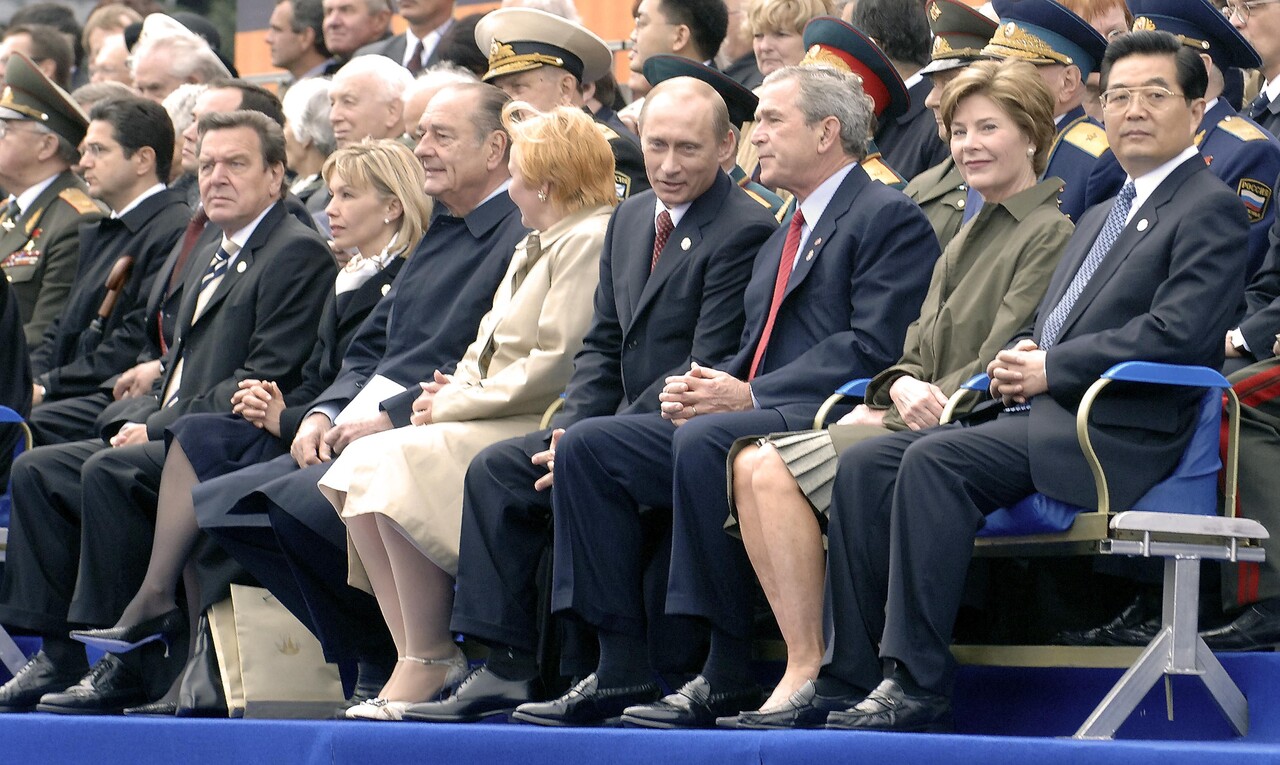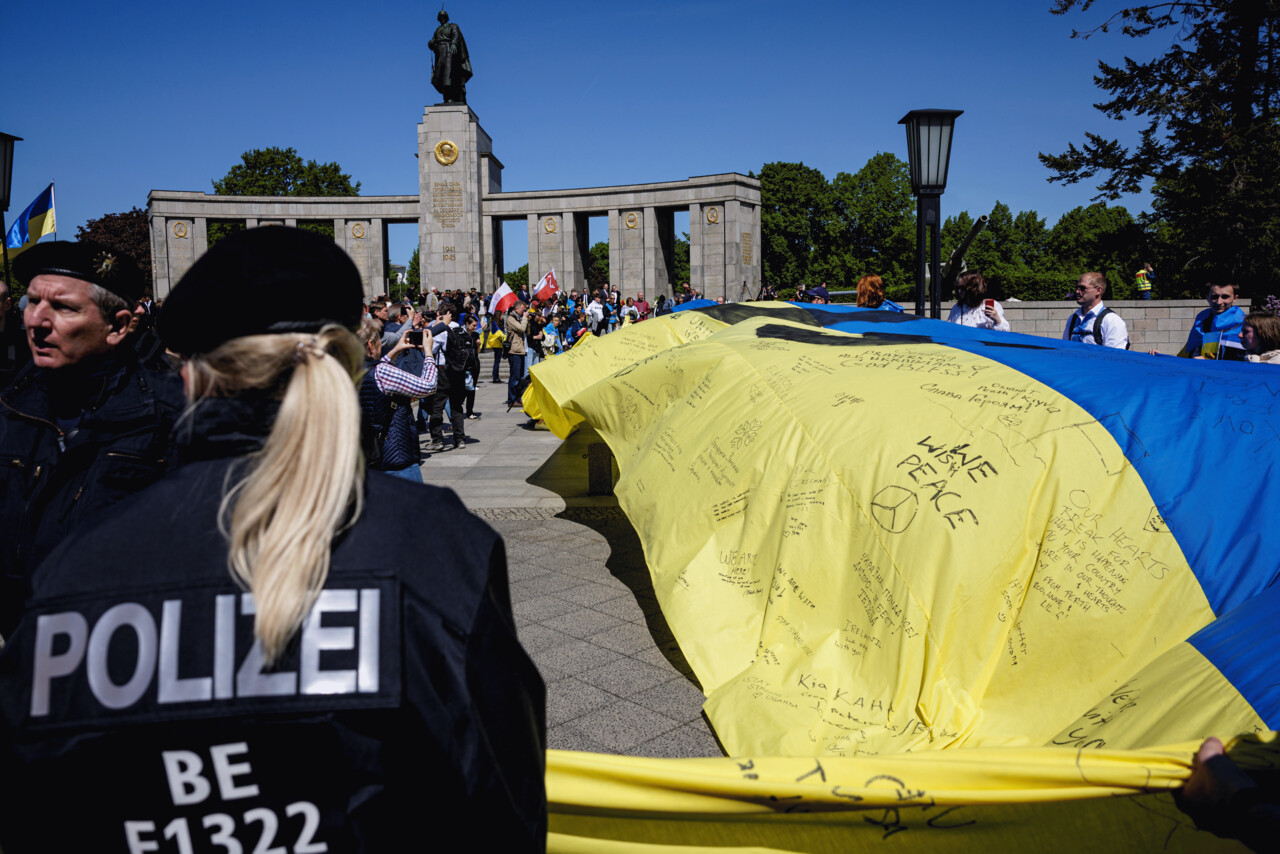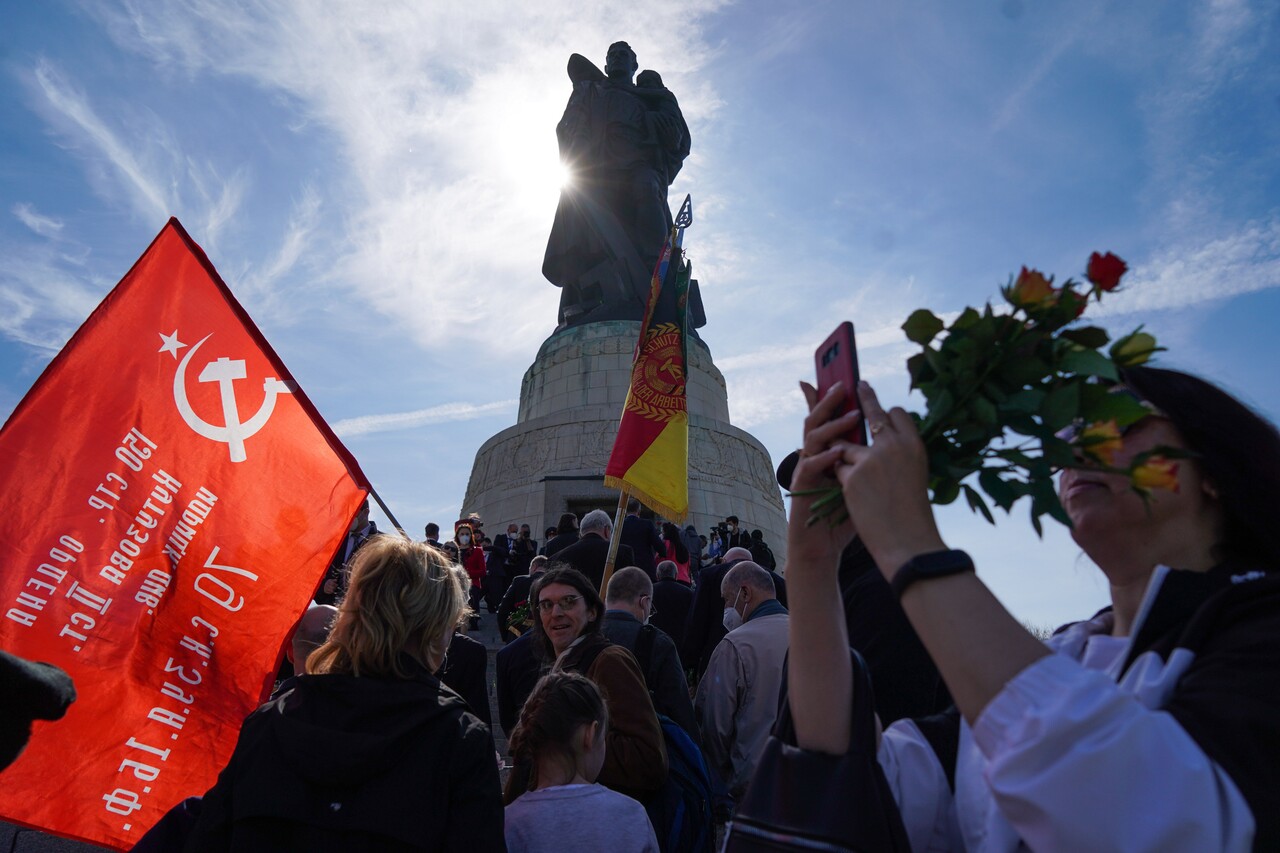Suppression and Remembrance
With the Cold War and the integration of the Federal Republic of Germany into the West in 1949, Allied pressured to prosecute National Socialist perpetrators diminished. Soon after, the Federal Government reinstated numerous people with criminal records into the civil service. The German Democratic Republic (GDR), also founded in 1949, regarded itself as an »anti-fascist« state. From the late 1950s, the regime set up memorials in former concentration camps, centering Communist resistance in its presentation. At the same time, the GDR denounced the careers of former officials in West Germany. It was not until the Frankfurt Auschwitz trials in 1963, the student protests in 1968 and the debates on the statute of limitations for murder offences in 1979 that the »unresolved past« came to the attention of the public in the Federal Republic. In reunified Germany, crimes committed during World War Two by the German Wehrmacht also came under discussion, as did responsibility for the victims of the German war of annihilation as part of the debate about a central Holocaust Memorial in Berlin. However, 1 September and 8 May are not yet national days of remembrance in the Federal Republic of Germany.
Bonn, 8 May 1985: Commemorative event in the plenary chamber of the German Bundestag to mark the 40th anniversary of the end of the Second World War in Europe. Richard von Weizsäcker (1920 – 2015) was the first German President to call 8 May 1945 a »day of liberation«. His speech is considered a milestone in the public reappraisal of the Nazi era in the Federal Republic of Germany.
Bundesarchiv Bild-00013491
Munich, 1997: Protests against the exhibition »War of annihilation. Crimes of the Wehrmacht 1941 to 1944« organised by the Hamburg Institute for Social Research. The first version of the exhibition was shown in 33 German and Austrian cities between 1995 and 1999 and attracted 900,000 visitors. Following criticism of the content, a completely new version was produced in 2001, which was viewed by 450,000 people.
argum, 103407
Moscow, 9 May 2005: Victory parade on Red Square; from left: Gerhard Schröder, German Chancellor, Doris Schröder-Köpf, Jacques Chirac, President of the French Republic, Ludmilla Putina, Vladimir Putin, President of the Russian Federation, and George W. Bush, President of the United States of America. Schröder's participation could be interpreted at the time as a sign of reconciliation between the former wartime enemies.
Bundesarchiv, B 145 Bild-00071898
Berlin-Tiergarten, 8 May 2022: Despite the ban on political symbols such as flags, several hundred people gather at the Soviet Memorial – under police protection and chants from pro-Moscow counter-demonstrators – to denounce Russian war crimes in Ukraine, honour veterans and commemorate the Ukrainian fallen in the World War Two.
Getty Images, 1240533759
Berlin-Treptow, 9 May 2023: Following the expansion of the Russian Federation's war of aggression against Ukraine in February 2022, which began in 2014 in violation of international law, Putin supporters abuse the anniversary of the »liberation« at the Soviet memorial for their propaganda.
picture alliance / dpa / Jörg Carstensen, 241122336
